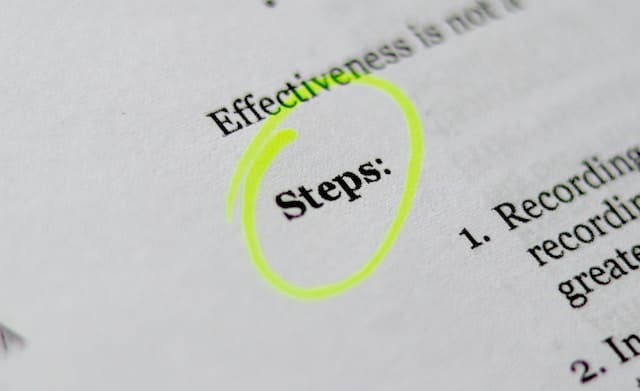Ready to crush your next data science interview? Well, you’re in the right place.
This type of interview is designed to assess your problem-solving skills, technical knowledge, and ability to apply data-driven solutions to real-world challenges.
So, how can you master these interviews and secure your next job?
To master your data science case study interview:
Practice Case Studies: Engage in mock scenarios to sharpen problem-solving skills.
Review Core Concepts: Brush up on algorithms, statistical analysis, and key programming languages.
Contextualize Solutions: Connect findings to business objectives for meaningful insights.
Clear Communication: Present results logically and effectively using visuals and simple language.
Adaptability and Clarity: Stay flexible and articulate your thought process during problem-solving.
This article will delve into each of these points and give you additional tips and practice questions to get you ready to crush your upcoming interview!
After you’ve read this article, you can enter the interview ready to showcase your expertise and win your dream role.
Let’s dive in!

What to Expect in the Interview?
Data science case study interviews are an essential part of the hiring process. They give interviewers a glimpse of how you, approach real-world business problems and demonstrate your analytical thinking, problem-solving, and technical skills.
Furthermore, case study interviews are typically open-ended, which means you’ll be presented with a problem that doesn’t have a right or wrong answer.
Instead, you are expected to demonstrate your ability to:
Break down complex problems
Make assumptions
Gather context
Provide data points and analysis
This type of interview allows your potential employer to evaluate your creativity, technical knowledge, and attention to detail.
But what topics will the interview touch on?
Topics Covered in Data Science Case Study Interviews

In a case study interview, you can expect inquiries that cover a spectrum of topics crucial to evaluating your skill set:
Topic 1: Problem-Solving Scenarios
In these interviews, your ability to resolve genuine business dilemmas using data-driven methods is essential.
These scenarios reflect authentic challenges, demanding analytical insight, decision-making, and problem-solving skills.
Real-world Challenges: Expect scenarios like optimizing marketing strategies, predicting customer behavior, or enhancing operational efficiency through data-driven solutions.
Analytical Thinking: Demonstrate your capacity to break down complex problems systematically, extracting actionable insights from intricate issues.
Decision-making Skills: Showcase your ability to make informed decisions, emphasizing instances where your data-driven choices optimized processes or led to strategic recommendations.
Your adeptness at leveraging data for insights, analytical thinking, and informed decision-making defines your capability to provide practical solutions in real-world business contexts.

Topic 2: Data Handling and Analysis
Data science case studies assess your proficiency in data preprocessing, cleaning, and deriving insights from raw data.
Data Collection and Manipulation: Prepare for data engineering questions involving data collection, handling missing values, cleaning inaccuracies, and transforming data for analysis.
Handling Missing Values and Cleaning Data: Showcase your skills in managing missing values and ensuring data quality through cleaning techniques.
Data Transformation and Feature Engineering: Highlight your expertise in transforming raw data into usable formats and creating meaningful features for analysis.
Mastering data preprocessing—managing, cleaning, and transforming raw data—is fundamental. Your proficiency in these techniques showcases your ability to derive valuable insights essential for data-driven solutions.
Topic 3: Modeling and Feature Selection
Data science case interviews prioritize your understanding of modeling and feature selection strategies.
Model Selection and Application: Highlight your prowess in choosing appropriate models, explaining your rationale, and showcasing implementation skills.
Feature Selection Techniques: Understand the importance of selecting relevant variables and methods, such as correlation coefficients, to enhance model accuracy.
Ensuring Robustness through Random Sampling: Consider techniques like random sampling to bolster model robustness and generalization abilities.
Excel in modeling and feature selection by understanding contexts, optimizing model performance, and employing robust evaluation strategies.
Become a master at data modeling using these best practices:
Topic 4: Statistical and Machine Learning Approach
These interviews require proficiency in statistical and machine learning methods for diverse problem-solving. This topic is significant for anyone applying for a machine learning engineer position.
Using Statistical Models: Utilize logistic and linear regression models for effective classification and prediction tasks.
Leveraging Machine Learning Algorithms: Employ models such as support vector machines (SVM), k-nearest neighbors (k-NN), and decision trees for complex pattern recognition and classification.
Exploring Deep Learning Techniques: Consider neural networks, convolutional neural networks (CNN), and recurrent neural networks (RNN) for intricate data patterns.
Experimentation and Model Selection: Experiment with various algorithms to identify the most suitable approach for specific contexts.
Combining statistical and machine learning expertise equips you to systematically tackle varied data challenges, ensuring readiness for case studies and beyond.
Topic 5: Evaluation Metrics and Validation
In data science interviews, understanding evaluation metrics and validation techniques is critical to measuring how well machine learning models perform.
Choosing the Right Metrics: Select metrics like precision, recall (for classification), or R² (for regression) based on the problem type. Picking the right metric defines how you interpret your model’s performance.
Validating Model Accuracy: Use methods like cross-validation and holdout validation to test your model across different data portions. These methods prevent errors from overfitting and provide a more accurate performance measure.
Importance of Statistical Significance: Evaluate if your model’s performance is due to actual prediction or random chance. Techniques like hypothesis testing and confidence intervals help determine this probability accurately.
Interpreting Results: Be ready to explain model outcomes, spot patterns, and suggest actions based on your analysis. Translating data insights into actionable strategies showcases your skill.
Finally, focusing on suitable metrics, using validation methods, understanding statistical significance, and deriving actionable insights from data underline your ability to evaluate model performance.

Also, being well-versed in these topics and having hands-on experience through practice scenarios can significantly enhance your performance in these case study interviews.
Prepare to demonstrate technical expertise and adaptability, problem-solving, and communication skills to excel in these assessments.
Now, let’s talk about how to navigate the interview.
Here is a step-by-step guide to get you through the process.
Steps by Step Guide Through the Interview

This section’ll discuss what you can expect during the interview process and how to approach case study questions.
Step 1: Problem Statement: You’ll be presented with a problem or scenario—either a hypothetical situation or a real-world challenge—emphasizing the need for data-driven solutions within data science.
Step 2: Clarification and Context: Seek more profound clarity by actively engaging with the interviewer. Ask pertinent questions to thoroughly understand the objectives, constraints, and nuanced aspects of the problem statement.
Step 3: State your Assumptions: When crucial information is lacking, make reasonable assumptions to proceed with your final solution. Explain these assumptions to your interviewer to ensure transparency in your decision-making process.
Step 4: Gather Context: Consider the broader business landscape surrounding the problem. Factor in external influences such as market trends, customer behaviors, or competitor actions that might impact your solution.
Step 5: Data Exploration: Delve into the provided datasets meticulously. Cleanse, visualize, and analyze the data to derive meaningful and actionable insights crucial for problem-solving.
Step 6: Modeling and Analysis: Leverage statistical or machine learning techniques to address the problem effectively. Implement suitable models to derive insights and solutions aligning with the identified objectives.
Step 7: Results Interpretation: Interpret your findings thoughtfully. Identify patterns, trends, or correlations within the data and present clear, data-backed recommendations relevant to the problem statement.
Step 8: Results Presentation: Effectively articulate your approach, methodologies, and choices coherently. This step is vital, especially when conveying complex technical concepts to non-technical stakeholders.
Remember to remain adaptable and flexible throughout the process and be prepared to adapt your approach to each situation.
Now that you have a guide on navigating the interview, let us give you some tips to help you stand out from the crowd.
Top 3 Tips to Master Your Data Science Case Study Interview

Approaching case study interviews in data science requires a blend of technical proficiency and a holistic understanding of business implications.
Here are practical strategies and structured approaches to prepare effectively for these interviews:
1. Comprehensive Preparation Tips
To excel in case study interviews, a blend of technical competence and strategic preparation is key.
Here are concise yet powerful tips to equip yourself for success:
Practice with Mock Case Studies: Familiarize yourself with the process through practice. Online resources offer example questions and solutions, enhancing familiarity and boosting confidence.
Review Your Data Science Toolbox: Ensure a strong foundation in fundamentals like data wrangling, visualization, and machine learning algorithms. Comfort with relevant programming languages is essential.
Simplicity in Problem-solving: Opt for clear and straightforward problem-solving approaches. While advanced techniques can be impressive, interviewers value efficiency and clarity.
Interviewers also highly value someone with great communication skills. Here are some tips to highlight your skills in this area.
2. Communication and Presentation of Results

In case study interviews, communication is vital. Present your findings in a clear, engaging way that connects with the business context. Tips include:
Contextualize results: Relate findings to the initial problem, highlighting key insights for business strategy.
Use visuals: Charts, graphs, or diagrams help convey findings more effectively.
Logical sequence: Structure your presentation for easy understanding, starting with an overview and progressing to specifics.
Simplify ideas: Break down complex concepts into simpler segments using examples or analogies.
Mastering these techniques helps you communicate insights clearly and confidently, setting you apart in interviews.
Lastly here are some preparation strategies to employ before you walk into the interview room.
3. Structured Preparation Strategy
Prepare meticulously for data science case study interviews by following a structured strategy.
Here’s how:
Practice Regularly: Engage in mock interviews and case studies to enhance critical thinking and familiarity with the interview process. This builds confidence and sharpens problem-solving skills under pressure.
Thorough Review of Concepts: Revisit essential data science concepts and tools, focusing on machine learning algorithms, statistical analysis, and relevant programming languages (Python, R, SQL) for confident handling of technical questions.
Strategic Planning: Develop a structured framework for approaching case study problems. Outline the steps and tools/techniques to deploy, ensuring an organized and systematic interview approach.
Understanding the Context: Analyze business scenarios to identify objectives, variables, and data sources essential for insightful analysis.
Ask for Clarification: Engage with interviewers to clarify any unclear aspects of the case study questions. For example, you may ask ‘What is the business objective?’ This exhibits thoughtfulness and aids in better understanding the problem.
Transparent Problem-solving: Clearly communicate your thought process and reasoning during problem-solving. This showcases analytical skills and approaches to data-driven solutions.
Blend technical skills with business context, communicate clearly, and prepare to systematically ace your case study interviews.
Now, let’s really make this specific.
Each company is different and may need slightly different skills and specializations from data scientists.
However, here is some of what you can expect in a case study interview with some industry giants.
Case Interviews at Top Tech Companies

As you prepare for data science interviews, it’s essential to be aware of the case study interview format utilized by top tech companies.
In this section, we’ll explore case interviews at Facebook, Twitter, and Amazon, and provide insight into what they expect from their data scientists.
Facebook predominantly looks for candidates with strong analytical and problem-solving skills. The case study interviews here usually revolve around assessing the impact of a new feature, analyzing monthly active users, or measuring the effectiveness of a product change.
To excel during a Facebook case interview, you should break down complex problems, formulate a structured approach, and communicate your thought process clearly.
Twitter, similar to Facebook, evaluates your ability to analyze and interpret large datasets to solve business problems. During a Twitter case study interview, you might be asked to analyze user engagement, develop recommendations for increasing ad revenue, or identify trends in user growth.
Be prepared to work with different analytics tools and showcase your knowledge of relevant statistical concepts.
Amazon
Amazon is known for its customer-centric approach and data-driven decision-making. In Amazon’s case interviews, you may be tasked with optimizing customer experience, analyzing sales trends, or improving the efficiency of a certain process.
Keep in mind Amazon’s leadership principles, especially “Customer Obsession” and “Dive Deep,” as you navigate through the case study.
Remember, practice is key. Familiarize yourself with various case study scenarios and hone your data science skills.
With all this knowledge, it’s time to practice with the following practice questions.
Mockup Case Studies and Practice Questions

To better prepare for your data science case study interviews, it’s important to practice with some mockup case studies and questions.
One way to practice is by finding typical case study questions.
Here are a few examples to help you get started:
Customer Segmentation: You have access to a dataset containing customer information, such as demographics and purchase behavior. Your task is to segment the customers into groups that share similar characteristics. How would you approach this problem, and what machine-learning techniques would you consider?
Fraud Detection: Imagine your company processes online transactions. You are asked to develop a model that can identify potentially fraudulent activities. How would you approach the problem and which features would you consider using to build your model? What are the trade-offs between false positives and false negatives?
Demand Forecasting: Your company needs to predict future demand for a particular product. What factors should be taken into account, and how would you build a model to forecast demand? How can you ensure that your model remains up-to-date and accurate as new data becomes available?
By practicing case study interview questions, you can sharpen problem-solving skills, and walk into future data science interviews more confidently.
Remember to practice consistently and stay up-to-date with relevant industry trends and techniques.
Final Thoughts
Data science case study interviews are more than just technical assessments; they’re opportunities to showcase your problem-solving skills and practical knowledge.
Furthermore, these interviews demand a blend of technical expertise, clear communication, and adaptability.
Remember, understanding the problem, exploring insights, and presenting coherent potential solutions are key.
By honing these skills, you can demonstrate your capability to solve real-world challenges using data-driven approaches. Good luck on your data science journey!
Frequently Asked Questions
How would you approach identifying and solving a specific business problem using data?
To identify and solve a business problem using data, you should start by clearly defining the problem and identifying the key metrics that will be used to evaluate success.
Next, gather relevant data from various sources and clean, preprocess, and transform it for analysis. Explore the data using descriptive statistics, visualizations, and exploratory data analysis.
Based on your understanding, build appropriate models or algorithms to address the problem, and then evaluate their performance using appropriate metrics. Iterate and refine your models as necessary, and finally, communicate your findings effectively to stakeholders.
Can you describe a time when you used data to make recommendations for optimization or improvement?
Recall a specific data-driven project you have worked on that led to optimization or improvement recommendations. Explain the problem you were trying to solve, the data you used for analysis, the methods and techniques you employed, and the conclusions you drew.
Share the results and how your recommendations were implemented, describing the impact it had on the targeted area of the business.
How would you deal with missing or inconsistent data during a case study?
When dealing with missing or inconsistent data, start by assessing the extent and nature of the problem. Consider applying imputation methods, such as mean, median, or mode imputation, or more advanced techniques like k-NN imputation or regression-based imputation, depending on the type of data and the pattern of missingness.
For inconsistent data, diagnose the issues by checking for typos, duplicates, or erroneous entries, and take appropriate corrective measures. Document your handling process so that stakeholders can understand your approach and the limitations it might impose on the analysis.
What techniques would you use to validate the results and accuracy of your analysis?
To validate the results and accuracy of your analysis, use techniques like cross-validation or bootstrapping, which can help gauge model performance on unseen data. Employ metrics relevant to your specific problem, such as accuracy, precision, recall, F1-score, or RMSE, to measure performance.
Additionally, validate your findings by conducting sensitivity analyses, sanity checks, and comparing results with existing benchmarks or domain knowledge.
How would you communicate your findings to both technical and non-technical stakeholders?
To effectively communicate your findings to technical stakeholders, focus on the methodology, algorithms, performance metrics, and potential improvements. For non-technical stakeholders, simplify complex concepts and explain the relevance of your findings, the impact on the business, and actionable insights in plain language.
Use visual aids, like charts and graphs, to illustrate your results and highlight key takeaways. Tailor your communication style to the audience, and be prepared to answer questions and address concerns that may arise.
How do you choose between different machine learning models to solve a particular problem?
When choosing between different machine learning models, first assess the nature of the problem and the data available to identify suitable candidate models. Evaluate models based on their performance, interpretability, complexity, and scalability, using relevant metrics and techniques such as cross-validation, AIC, BIC, or learning curves.
Consider the trade-offs between model accuracy, interpretability, and computation time, and choose a model that best aligns with the problem requirements, project constraints, and stakeholders’ expectations.
Keep in mind that it’s often beneficial to try several models and ensemble methods to see which one performs best for the specific problem at hand.








